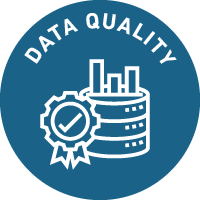The COSO Framework for Internal Control
April 3, 2025
 The COSO Framework for Internal Control
The COSO Framework for Internal Control
Internal frauds are a big part of the operational risk faced by any organization. This is truer of multinational companies who have business interests in various countries across the globe. This is because there are thousands of people in important positions making business decisions on behalf of the company. Hence, ensuring that all these employees…
 The Cost Structure in the Insurance Industry
The Cost Structure in the Insurance Industry
Insurance is one of the most regulated industries in the world. Also, there are multiple players which offer every type of insurance. As a result, the competitive pressures are very high. This ensures that the insurance companies are not able to charge exorbitant premiums. Almost every insurance company across the world is a price taker…
 Credit Derivatives: An Introduction
Credit Derivatives: An Introduction
Credit derivatives are the most important financial innovation in the field of credit risk management. These derivative instruments have been created quite recently. They have only been traded for a couple of decades as compared to other instruments like stocks and bonds which have been around for centuries. Within this short period of time, credit…
In the previous article, we have understood why data quality is important in the field of risk management. We also had a closer look at the various characteristics which constitute data quality as well as the processes that need to be put in place in order to manage data quality.
In this article, we will go a couple of steps further. First, we will try to understand what the impacts of using poor quality data are. Secondly, we will also try to understand how organizations build data quality metrics that help them ensure the consistency of data across various processes on a daily basis.
If proper data quality management is not set up in order to complement the risk management system, then the impact can be huge. The various types of impact which may be faced by an organization have been listed in this article.
The management and stakeholders will not be aware of the type of risk that they are undertaking. They will continuously be underestimating risk and making riskier bets than they should be making. This can have an adverse impact on the short-term and long-term finances of the firm. It can also jeopardize the survival of the company over the long run.
Organizations are supposed to ensure that their risk metrics stay within a certain threshold failing which they have to pay a monetary penalty. Hence, if data quality is not managed properly and poor data is shared with regulatory bodies, there could be financial loss in the form of penalties along with reputation loss as well.
For instance, managers may wrongly assume that they have thoroughly studied all the risks and hence are prepared for the worst possible outcome whereas in reality that may not be the case.
Hence, faulty data may give false confidence which could ultimately lead to bad decisions and financial losses. On the other hand, it is also possible that the managers may not have any confidence in the results given by the risk management system. In such cases, they may not be able to take calculated risks and hence take full advantage of the risk management system.
Delays can be particularly dangerous since managing market risks is all about timing. If the decision is not taken at the correct time, then the impact can be humungous since security prices can fluctuate wildly in a matter of a few hours.

In order to manage the data quality across different time periods, organizations need to find a way to quantify this data quality. This is done by using data quality metrics. Data quality metrics can be of two types. The difference between the two types has been explained below:
Hence, the bottom line is that data quality issues can be very expensive. This is because they are the raw material for several processes in the risk management domain. If the raw material itself is of poor quality, then so is the outcome.
Your email address will not be published. Required fields are marked *